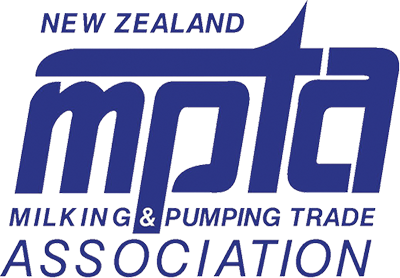Automatic Cluster Removers
In milking sheds with manual take-off, the milker has three methods of determining when the cups should be removed:
- Judging that the "cow is finished". This method relies on the skill of the milker, and is not consistent between milkers. Different milkers have a different interpretation of "finished", and it is hard to train staff to assess the same end of milking point as the manager would like.
- When the milker gets to them. This method is all too common - the number of cups handled by a milker in a herringbone dairy is often excessive, and cows are well finished their milking by the time the milkers routine has got to that cow. A rotary dairy usually has a rotation speed suitable for attaching the clusters. This speed will have cows being milked out long before the cow rotates to the cups-off milker.
- As soon as the milker can get them off. This is similar to the method above, but is found where the milker is running a routine too fast for the cow to properly milk out. The consequence is many cows being under milked.
An ACR is far more effective at identifying the end of milking point than a human operator, and removes the cluster at the appropriate time, without over milking or under milking. This is the key area where ACR contributes to milk quality. Correct removal of cups means that under milking is eliminated and that the teat is exposed to vacuum for no longer than it needs to be. Exposing teats to vacuum for longer weakens the teats defence mechanisms. The weakened defence mechanism, along with incomplete milking out increases the teat predisposition to infection (EBENDORF et al., 1986: ZIESACK et al., 1986)
There are numerous anecdotal examples of significant reductions of SCC on farms where ACR have been fitted - reductions of 80,000 are not uncommon.
As always with milking equipment, it is vitally important that the ACR is correctly installed and all of its settings are adjusted to the requirements of the farmer and his particular milking system and herd. It is also very important that we regularly service our clients ACR to ensure that they are operating correctly, and that the settings are still appropriate. The manufacturer of the ACR will have provided a schedule of "correct" settings for their particular ACR. These can be considered the default settings, but every ACR will need some customisation to the farm. As previously discussed in this newsletter, the milking "system" vacuum will need to be adjusted to compensate for friction loss caused by ACR (if any), and for any additional height that milk must be lifted to as it passes through the ACR sensor.
Be careful not to allow the low milking threshold to be set too low. Many farmers like to see the cow "wrung out" of milk (a symptom of the over milking they are used to in their manual systems perhaps). Setting ACR at too low a threshold unnecessarily prolongs milking for very little extra yield (see the next paragraph for information that tends to support this) and will still expose the teat to vacuum for longer than necessary. Globally, the typical end of milking threshold is being raised. In the US it is common for this to be above 0.5 l/m, with some reports of nearly 1.0 l/m being used. In NZ we do not generally have cows as free milking, but should be considering end of milking thresholds of at least 0.3 l/m.
At this years Dairy Cattle Veterinarians Conference, Jenny Jago, a scientist at DairyNZ presented findings of a study setting maximum milking times with ACR. In summary, this means ACR systems with the ability to remove cups after a set maximum milking time, regardless of whether the cow is finished. The ACR was still able to remove cups normally for those cows that finished milking before the maximum time (interestingly, the end of milkng threshold used in this study was 0.35 l/m). Ms Jago found that removing cups from slower cows in herringbones, and not allowing second rounds in rotaries reduced milking times without a major reduction (approximately 1.7% less MS/cow) in yield or any detrimental affect on mastitis or SCC. A recent Australian study also supports these findings. Many of our farmers will have some knowledge of these findings, and we need to be aware as well so that we can discuss the subject with our customers. However, we must always ensure that farmers are fully conversant with all aspects of this study and make any maximum milking time decisions for themselves.
There are reports coming from the veterinary sector that ACR somehow "contributes to mastitis". There is no apparent basis for this view other than some ACR might not operating to the correct specifications and settings, or that they need some servicing to return them to correct function. We need to spend as much time on ensuring correct function of ACR as we do on ensuring proper pulsator performance. We owe this service to our customers with ACR, and must deliver the service to ensure that views like those of the veterinary sector do not take hold and diminish the uptake of ACR.
A final point, many framers consider the sole purpose of ACR is "save labour". We should not encourage this reason too vigorously, as ACR really only free a milker from the business of taking off the cups. The need for a milker to be present still exist for tasks such as animal health monitoring, mating management, cow movements in the yard, maintenance and repair of ACR equipment, reattachment of fallen clusters etc. The primary contribution of ACR is to improve milk quality.



